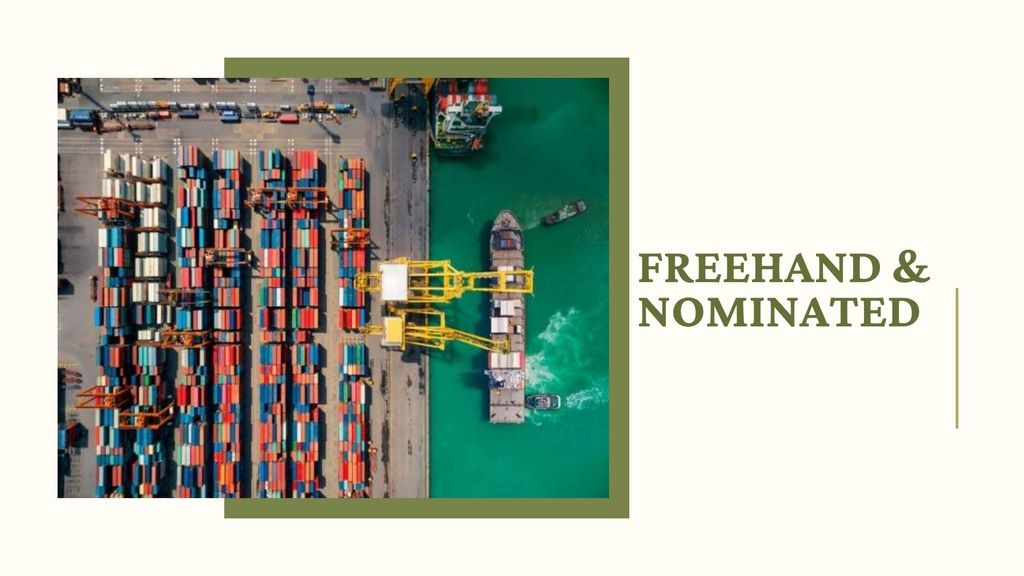Have you ever encountered terms or questions like "Do you use service “Nom” or “Freehand” good?"
For us, the first time we met and interacted with these terms, we wondered "What are they saying to us?". Of course, after that, we had to immediately go to Ms. "Google" to seek support. After preliminary research, we also grasped the basic concepts of the two terms "Nom" and "Freehand".
To briefly understand first, freehand goods (sale goods or selected goods) and nominated goods (designated goods) are two terms often used by sales staff at shipping lines and forwarding companies to indicate the type of goods they follow.
So what are the specific concepts of freehand goods and nominated goods? And how are those two types of goods different?
Let's find out together through the article below!!
On the upcoming April 30th, King Elong would like to send best wishes to everyone. Hope you have a wonderful, meaningful, and happy holiday with your family and loved ones!
FREEHAND AND NOMINATED GOODS
The first thing, in this article, we will present the exporter.
👉 Freehand goods (sale goods or selected goods) are the type of goods that the Shipper himself vessels and pays freight according to Incoterms conditions. Accordingly, the term Incoterms is commercial transaction terms. Each clause will clarify who pays the shipping charges for each journey. All problems from choosing a shipping company will be decided by the Shipper.
👉 Nominated goods (also known as designated goods) are usually exported goods according to FOB terms. The buyer will pay the freight and appoint the specific carrier. Therefore, the seller only needs to pay the local charges at the beginning of export and of course, they have no right to choose another shipping company.
Compare:
“Nom” goods
👉 Advantage: The exporter only needs to deliver goods on board to complete his/her responsibilities
👉 Disadvantage: If the exporter is unable to proactively export time, the person doing the exporter’s exported goods will be subject to comply with the available designated time.
Freehand goods
👉 Advantage: Actively choose the shipping company with the best prices and most beneficial costs and choose the shipping and delivery time.
👉 Disadvantages: For sales staff, they have to carry out all processes, including looking for customers, offering prices, closing contracts, and tracking shipments.
So how to distinguish between freehand and “Nom” goods?
When looking at the set of documents, the signs to distinguish the two types of based on Incoterms and international freight rates.
1. Based on Incoterms
I will consider Incoterms 2010!
👉 For Freehand goods, there will be 2 delivery conditions C and D, in which, conditions C will include CPT, CIP, CFR, and CIF, while terms D will include DAT, DAP, and DDP. When using these terms, the export business will bear the cost of international shipping freight and have the right to choose the forwarder company.
👉 Regarding Nominated goods, there will be two delivery terms are E and F, in which, condition E includes EXW, while condition F includes: FCA, FAS, and FOB. This means the export business does not need to pay international shipping charges to the importing country. Risk and responsibility of the exporter are transferred to the importer right at the port of loading in the exporting country. Payment of International shipping freight will be guaranteed by the consignee’s responsibility.
2. Based on international shipping rates
👉 For shipments having prepaid freight charges (shown on the Bill of Lading), it is a freehand product because the exporter is responsible for booking vessels and shipping freight has been prepaid in the exporting nation.
👉 For shipments with freight collection, it will be nominated goods, because the importer is responsible for booking vessels and paying shipping fees at the destination port.


